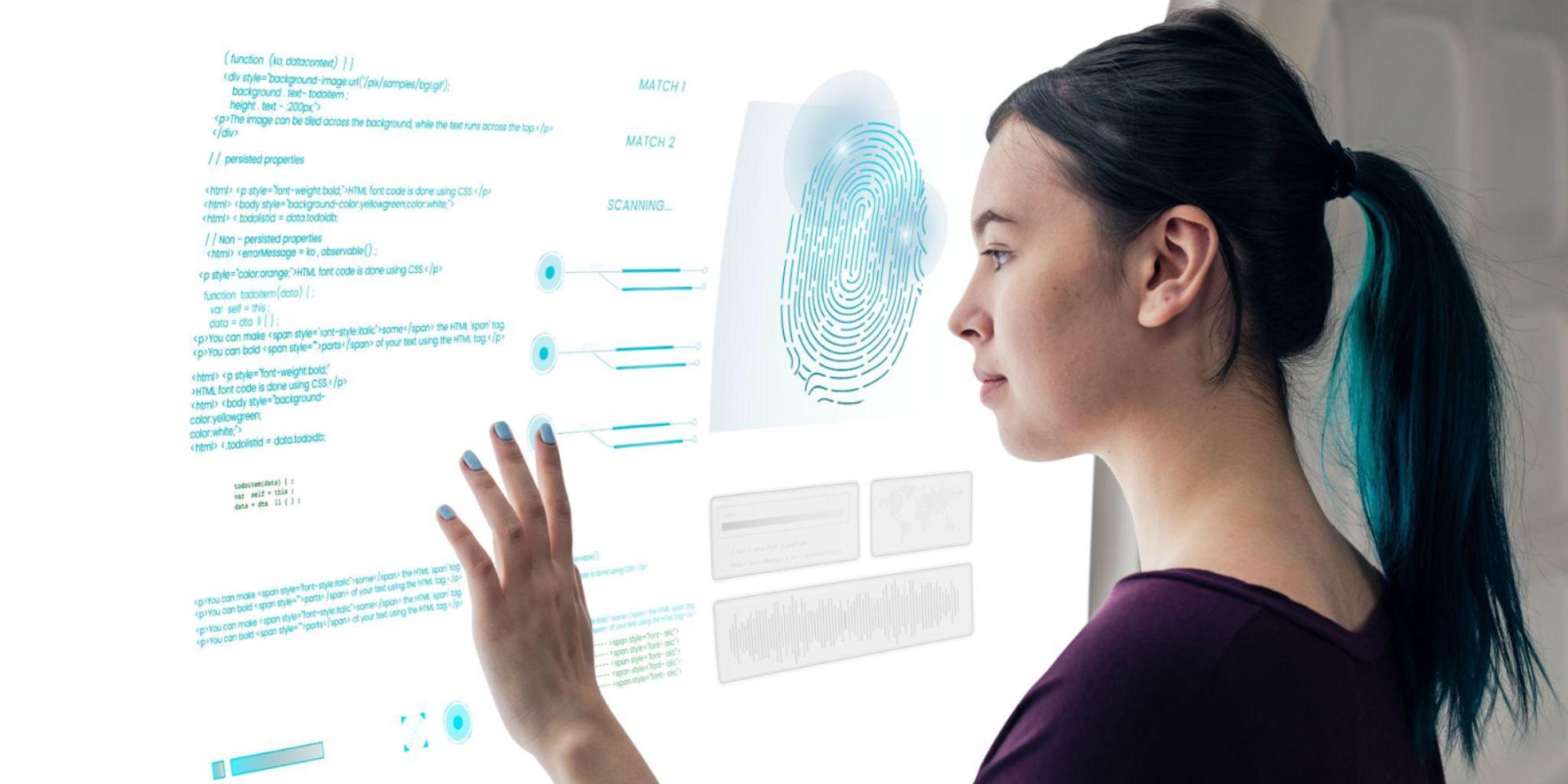
Benefits of Integrating Artificial Intelligence with Digital Signage
Digital signage is becoming a default in marketing and communications strategies. From being used as a wayfinding solution to facilitating self-service in restaurants, hotels, and airports, businesses are leveraging the power of digital signage in many ways.
While the technology is a step up from traditional signage solutions, it’s also being developed further to leverage new technologies and innovations. One of the most recent adaptations of cloud based digital signage software is its integration with generative artificial intelligence and machine learning.
What is Generative AI?
Generative artificial intelligence (AI) is a machine learning subset where computers create new content using data and knowledge gained from previous content. It uses an algorithm that learns from previous topics and teaches itself through a mechanism called deep learning.
In essence, generative AI is a learning engine that adopts and develops its knowledge about a particular topic as more data comes in. As a result, it’s able to create new content, whether image, video, audio, text, or code, that is authentic and original.
Take for example ChatGPT, the current most popular tool that uses generative AI. It creates content based on its learnings from a massive pool of data learned from the Internet and delivers it on-demand when a user requests it through a prompt.
The Growing Use of AI and Machine Learning With Digital Signage
In recent years, we’ve seen growing use of generative AI solutions among businesses, helping them deliver their services to their customers.
Digital signage is in a good position to take advantage of AI and machine learning. When integrated and optimized, these technologies can be valuable in allowing a digital signage network to create and display relevant, data-driven content in real-time.
Both sectors are projected to see tremendous growth over the next couple of years. By 2025, the digital signage market is expected to value at $31.71 billion while the AI market will rise to $90 billion. As both sectors grow at the same pace, it’s only a matter of time before they merge to create new possibilities for businesses.
How AI and Machine Learning are Used in Digital Signage
The integration of AI and machine learning in digital signage puts it in a position to leverage modern technology and deliver smoother and better experiences for customers. Here are some ways that AI has impacted and improved digital signage solutions.
Data Collection

Digital signage is primarily a communications tool, used to relay information to its intended audience. But in recent years, brands have been tapping into the data collection and analytics features of digital signage, using their displays to retrieve information about their viewers’ demographics and behaviors.
AI can be valuable in enhancing digital signage’s ability to collect data, adding next-gen features like facial recognition and sensors. Through this, businesses can gain more valuable and unique data about their customers.
The collected information can also be used in real-time, amplifying a business’s decision-making process and allowing them to immediately deliver targeted and relevant content that serves their objectives.
Personalized User Experience
As consumers crave more personalized experiences with brands, cookie-cutter marketing and advertising techniques are no longer generating results. Today, every business is aiming to provide experiences unique to each customer.
While AI is a heavily debated topic for its lack of human connection, it is still a tool of humans that can deliver the tailored experiences that consumers crave. In fact, research shows that people still respond to AI as if it were a real person.
In the context of digital signage, personalization is all about making the user feel unique and special. AI technology can allow digital signage to recognize customers and provide a custom greeting or communicate offers that are tailored to their purchasing history and behaviors.
Interactive Interface

In addition to demanding more personalized experiences, consumers are also wanting to have more control over their interactions with brands. We see an uptick in preference for self-service solutions that make transactions more efficient and give the user access to information much quicker.
AI can facilitate the installation of interactive digital signage. Coming in the form of touchscreen displays, interactive signage features allow users to pave their own journeys, choosing to view content their most interested in, perusing products they’re looking to purchase, and navigating the order process — all without having to wait to speak to a staff member.
The possibilities of using AI to create more interactive displays are vast. For example, it can pool in-store products into the display to allow customers to check features and prices or compare two products quickly and conveniently.
Ultimately, AI can enhance digital signage interactivity and streamline the shopping experience for customers. It also frees up the staff’s time, allowing them to focus on more critical areas of in-store management and operation.
Deep Learning
Deep learning is a mechanism by which AI learns from previous content and patterns to generate new information — similar to how the human brain processes data to help with decision-making. When applied to digital signage, AI can utilize its deep learning mechanism to collect and access vast amounts of data and react to them in real time.
Aside from providing businesses with unique and valuable information about their customers, AI in digital signage can also automate the process of delivering targeted content to them, drawing conclusions and responding to unique situations based on its learnings and thought patterns. Over time, it continues to learn more from the data it collects, improving its responses and actions even further.
Relevant Content

The beauty of digital signage is its ability to deliver relevant and targeted content based on its location and time of day. AI can enhance this feature, allowing content changes tailored to weather conditions, temperature, and customer demographics and behaviors.
For example, digital signage that integrates AI can be programmed to show an umbrella ad on a rainy day. Or in afternoons with scorching weather, the digital signage can be prompted to show an ad for ice cream or a refreshing drink.
AI can also take personalized ads a step further, targeting content down to the individual. The technology can help the screen detect the shopper’s gender, age, and other physical characteristics and show ads that they are likely to be interested in.
AI is able to make content more relevant through its deep learning mechanism. It bases its content according to the given situation, analyzing data sets and revealing content that is more apt for the current weather, temperature, or behavior condition.
Ad Scheduling
AI allows digital signage screens to function like online ads, learning about customers, their preferences, and behaviors to pinpoint the right content to show them. It brings the online ad process to physical stores, ensuring that the display shows the right content at the right time and to the right people.
By integrating AI with digital signage, the whole process of ad scheduling and deciding what content to show in unique situations is simplified and automated. The screens will show the customer the products they’re likely to be interested in based on their demographics and behaviors in-store, creating an unprecedented level of personalization and improving the customer experience.
Context-Aware Digital Signage
Integrating AI with digital signage makes the display context-aware, improving its ability to recognize weather, temperature, and environmental conditions, as well as how users are interacting with the screen. With a better understanding of the situations that surround the display, digital signage can deliver targeted content that connects and converts.
Technology at the Forefront of Digital Signage Solutions
With new technologies also come opportunities for digital signage solutions to offer more to businesses and end customers. AI and machine learning are among the recent innovations that are improving digital signage features and enhancing its benefits.
Are you ready to be part of the future of digital signage? Allow Rise Vision's free digital signage solution to power up your AI-integrated displays.
More From Our Blog
-

How Effective is Digital Signage?
Digital signs are revolutionizing. That's the short answer. But if you're trying to convince leadership to invest in screens for your school hallways, hospital waiting areas, or manufacturing floor,[…]
Read More -

10+ Office Welcome Sign Ideas
Getting a welcome sign on your office display shouldn't take all afternoon. Rise Vision makes it pretty straightforward: pick a template, swap in your logo, and push it to your screen. Done. The[…]
Read More -

Top Trends in Digital Signage Display Technology for 2025
Digital signage technology is evolving rapidly, with new innovations emerging every year. In this rapidly evolving landscape, businesses must adapt quickly to keep up with the latest advancements in[…]
Read More
Keep Your Displays Interesting – Pick New Templates Every Week!
Every week, we send template recommendations that will make you look great and improve your audience experience. And the best part, they save up to 16 hours of content creation time every week!
12,300+ Organizations Trust Rise Vision, You Can Too
Schedule a Free Demo
You deserve the #1 all-in-one platform for digital signage, screen sharing, and emergency alerts.



































